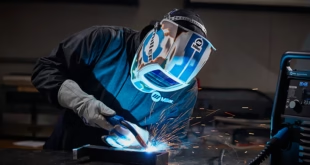5 Steps for Proper Weld Preparation
Table of Contents
ToggleIntroduction
Welding is a critical skill in various industries, from construction to manufacturing. However, achieving a strong and durable weld is not just about skillful execution; it begins with meticulous preparation. In this article, we will delve into the essential steps for proper weld preparation, unraveling the intricacies of each stage to empower welders with the knowledge needed to produce high-quality welds.

Steps for Proper Weld Preparation
1. Material Inspection and Cleaning
The foundation of any successful welding project lies in the quality of the materials used. Before even striking an arc, it is imperative to conduct a thorough inspection of the welding materials. This involves scrutinizing the metal for defects such as cracks, inclusions, or inconsistencies in composition. Identifying and addressing these issues at the outset can prevent catastrophic failures in the weld later on.
Once the materials pass inspection, the next crucial step is cleaning. Welding on contaminated surfaces can lead to poor fusion and weak welds. We explore various cleaning methods, from the traditional wire brushing to advanced chemical cleaning techniques. The significance of removing rust, paint, oil, and grease is discussed in detail, emphasizing the impact of cleanliness on weld integrity.
2. Joint Design and Fit-up
Choosing the right joint design is akin to selecting the proper foundation for a building. In this section, we explore the intricacies of joint design, considering factors such as material type, thickness, and intended application. Different joint configurations, including the V, U, and J grooves, are examined in terms of their advantages and ideal use cases.
Fit-up is the next critical aspect, influencing the success of the welding process. We discuss the importance of achieving a precise fit between the materials to be joined, eliminating gaps that could compromise the weld’s structural integrity. Tack welding, an often overlooked but crucial step, is explored as a means of holding components in place during the final welding operation.
3. Edge Preparation
Creating the right conditions for welding involves more than just fitting materials together. Edge preparation, particularly beveling, plays a pivotal role in ensuring proper penetration and weld quality. We delve into the nuances of edge preparation, discussing the significance of bevel angles and root faces. The article outlines best practices for achieving the optimal edge configuration based on the welding process and material type.
Understanding how to navigate edge preparation for different materials and applications is essential for welders looking to elevate their craft. Real-world examples and case studies illustrate the impact of edge preparation on weld strength and longevity.
4. Welding Position and Accessibility
The welding position and accessibility are often underestimated factors that can significantly affect the outcome of a welding project. Here, we explore the different welding positions—flat, horizontal, vertical, and overhead—and their respective challenges and advantages. The importance of proper workpiece positioning to facilitate accessibility and ease of welding is emphasized.
Securing the workpiece in an optimal position can make the difference between a smooth, efficient welding operation and a cumbersome one fraught with challenges. Practical tips and strategies for ensuring ideal welding positions are discussed, empowering welders to adapt to diverse working conditions.
5. Welding Equipment Setup
The final step in proper weld preparation is the setup of welding equipment. This involves configuring welding machines according to the Welding Procedure Specification (WPS) and ensuring that parameters such as voltage, current, and travel speed are aligned with the specific requirements of the welding job.
FAQs
1. Why is material inspection crucial in weld preparation?
Material inspection is crucial because it ensures the quality and integrity of the metals being joined. Identifying defects, cracks, or inconsistencies at this stage prevents potential welding failures. Welding on subpar materials can lead to weak welds and compromised structural integrity.
2. How does edge preparation impact weld quality?
Edge preparation, particularly beveling, plays a significant role in weld quality. Properly prepared edges with the right bevel angles and root faces allow for better penetration, ensuring a stronger and more durable weld. The article discusses the nuances of edge preparation and its direct correlation with weld strength and longevity.
3. Why is tack welding important in fit-up?
Tack welding is crucial in fit-up because it holds the components in place during the final welding operation. This prevents misalignment and ensures that the intended joint configuration is maintained. The article explains the significance of tack welding and provides insights into its best practices.
4. What factors influence the choice of welding positions?
The choice of welding positions, such as flat, horizontal, vertical, and overhead, is influenced by various factors. These include the nature of the welding project, the type of joint being welded, and the accessibility of the workpiece. The article explores the advantages and challenges of different welding positions and provides practical tips for adapting to diverse working conditions.
5. How does welding equipment setup impact the welding process?
Welding equipment setup is critical as it directly influences the success of the welding process. Configuring welding machines according to the Welding Procedure Specification (WPS) and adjusting parameters like voltage, current, and travel speed are essential for optimal performance. The article provides a comprehensive guide on welding equipment setup and addresses common challenges faced by welders.
Conclusion
Mastering the art of welding goes beyond the act of joining metals—it begins with meticulous preparation. The 5 steps for proper weld preparation outlined in this article provide a roadmap for welders to navigate the complexities of material selection, joint design, edge preparation, workpiece positioning, and equipment setup. By delving into the details of each step, welders can elevate their skills, produce high-quality welds, and contribute to the strength and integrity of the structures and products they help create.
 Welding of Welders All about Welding and Welders
Welding of Welders All about Welding and Welders



